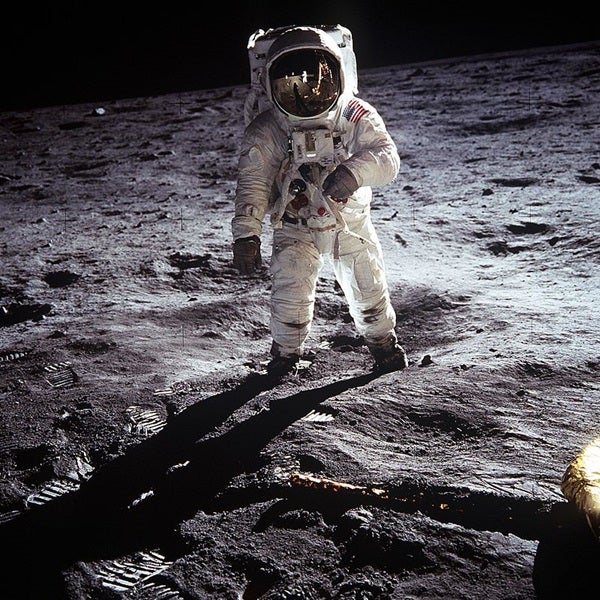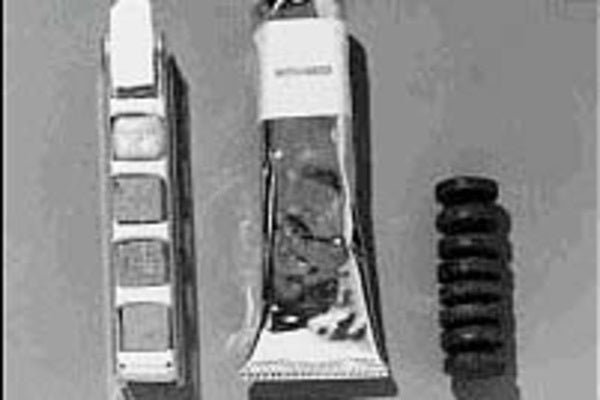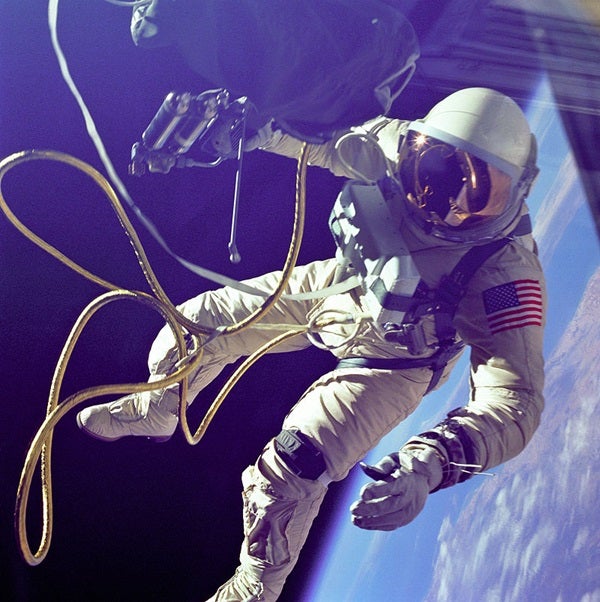
The stars, planets, and galaxies that speckle the cosmos are not the only fascinating denizens of the universe. At any given moment, there are also a handful of brave humans who currently call space home: astronauts.
These modern-day pioneers do more than just float around in microgravity. An astronaut’s job is complex, demanding, and ultimately, inspiring. But what do astronauts really do? Let’s journey beyond Earth’s atmosphere and dive into the complicated life of an astronaut.
The many job responsibilities of an astronaut
When you think of an astronaut, you might picture Neil Armstrong climbing down to the surface of the Moon, or Bruce McCandless floating – untethered – outside an orbiting space shuttle. But many of the day-to-day job responsibilities of an astronaut aren’t always as spectacular as you might imagine.
Although specific roles vary, in general, astronauts would likely list the following job responsibilities on their resumes.
- Scientific research: One of the primary reasons for sending humans to space is for scientific exploration. Astronauts often carry out experiments that probe the unique characteristics and potential applications of microgravity. This can range from studying biological organisms to examining physical phenomena that behave differently in space.
- Spacewalks: Officially termed Extra-Vehicular Activity (EVA), spacewalks are one of the most iconic, and potentially dangerous activities, an astronaut can carry out. Whether it’s repairing equipment, testing new technologies, or trouble-shooting issues, spacewalks are vital to maintaining the safety and reliability of the spacecraft astronauts call home.
- Maintenance and repairs: The ISS and other space residences are marvels of engineering. But they’re not immune to wear and tear. Astronauts are trained to handle a wide array of onboard systems, serving as the plumbers, electricians, and IT troubleshooters of their isolated home.
- Physical fitness: In the absence of gravity, muscles and bones weaken. That’s why astronauts must exercise about 2.5 hours a day to combat the effects of living in microgravity. This helps ensure they remain in peak physical condition and can readjust to Earth’s gravity upon return.
- Communication: Astronauts are the bridge between space and Earth. They frequently communicate with ground teams, updating them on mission progress and relaying important data. Additionally, astronauts often participate in outreach activities, sharing their experiences and findings with the general public and fostering enthusiasm for space exploration.
- Piloting spacecraft: Whether docking with the ISS or navigating lunar orbit, some astronauts are required to have excellent piloting skills. Modern spacecraft are equipped with advanced automation, but if things go awry, it’s ultimately up to the astronauts to take the reins.
Astronauts have household chores, too
Like all of us, astronauts also deal with the mundane. Cooking, cleaning, and sleeping are all vital aspects of the space experience. Yet each of these tasks comes with its own unique set of challenges in microgravity.
For example, want to wash your hair? Sure. Just throw on your specialized shower cap and make sure the nozzle is touching your scalp before gently and slowly applying the wash to your hair. And remember: Don’t you dare let any liquid escape.

As far as cooking goes, good luck. Although the food available to astronauts in orbit has vastly improved since the days of John Glenn – when his meal consisted of a tube of applesauce, a tube of vegetables and beef, and some sugar tablets in water – it’s still far from a delicacy most of the time. On the ISS, astronauts heat up their food using either a small conduction oven or by injecting a food pouch with hot water.
Nonetheless, at least NASA recognizes that reasonable food quality and variety are critical for maintaining happy and productive astronauts.
What does it take to become an astronaut?

Like all space agencies around the world, NASA has an extremely high bar when it comes to selecting potential space travelers. Becoming an astronaut isn’t just about a passion for space; it’s about having the right skills, education, and temperament.
At a minimum, NASA astronaut candidates must be U.S. citizens and have a bachelor’s degree in engineering, biological science, physical science, computer science, or mathematics. However, advanced degrees are often preferred. Following this, candidates need at least two years of related professional experience, or at least 1,000 hours of pilot-in-command time in jet aircraft. Physical fitness is also paramount, as NASA imposes strict medical exams to ensure astronaut candidates can handle the rigors of flying to and living in space.
Considering the tight quarters and high-stress situations astronauts may face, NASA also looks for candidates with exceptional teamwork, leadership, and communication skills. But remember, though the acceptance rate of astronaut candidates compared to applicants has greatly varied over the years, it has historically remained well below 1 percent, often dipping below 0.1 percent.
Life after space
Most of the time, astronauts don’t simply retire after their careers venturing to space. Instead, many leverage their cosmic journeys into influential roles here on Earth.
- Education and advocacy: Chris Hadfield, after commanding the ISS, became an educator, teaching space concepts worldwide and advocating for STEM education.
- Public speaking and writing: Buzz Aldrin, one of the first men on the Moon, has authored several books detailing his experiences as an astronaut and still frequently promotes space exploration.
- Government and policy: John Glenn, post-spaceflight, served as a U.S. Senator of Ohio, helping infuse space insights into national policy. Former astronaut Mark Kelly now serves as a U.S. Senator of Arizona.
- Private sector: Charlie Precourt transitioned to the aerospace industry (Orbital ATK) following a career with NASA. He now contributes to propulsion innovations and next-gen space tech.
- Philanthropy and initiatives: Mae Jemison, the first African-American woman in space, has been deeply involved in international science initiatives and promoting societal advancements.
As you can see, many times, astronauts’ experiences in space become catalysts for continued contributions on Earth. That’s because astronauts often carry forward their unique perspectives, helping bridge the gap between our daily lives on Earth and the almost incomprehensible wonders of the universe.
Astronauts are more than just space travelers. They are scientists, engineers, communicators, and visionaries. And as we set our sights on exploring deeper into the cosmos, you can be sure it will largely be through their work that we learn more about the universe and our place within it.









